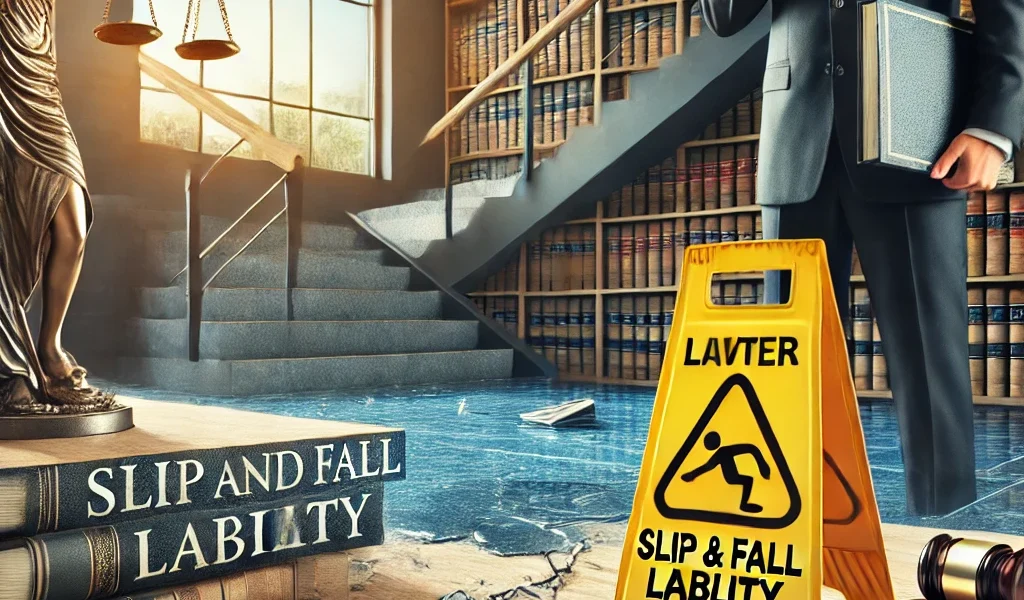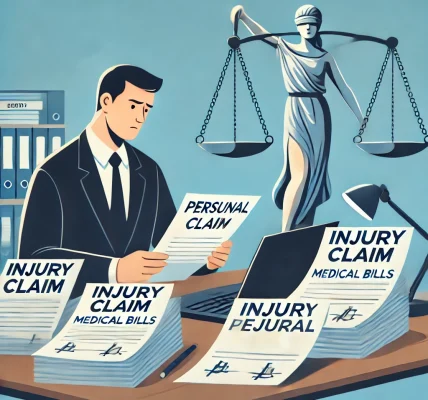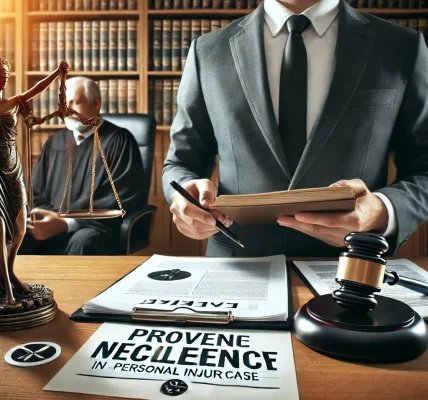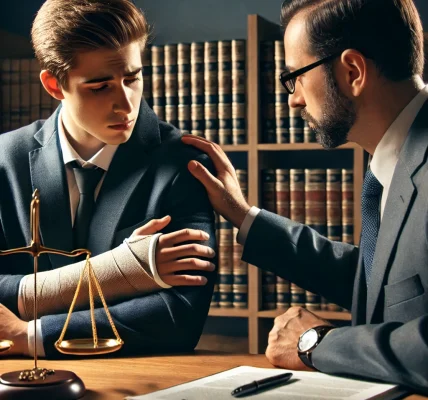Introduction Slip and fall accidents are among the most common personal injury cases, often leading to severe injuries and financial burdens. Whether the accident occurs in a grocery store, a parking lot, or a private property, proving liability is crucial for obtaining compensation. However, determining who is responsible can be challenging. In this guide, we will explore the legal aspects of proving liability in slip and fall injury cases while ensuring compliance with laws to avoid any legal pitfalls.
Understanding Slip and Fall LiabilityLiability in a slip and fall case primarily depends on the property owner’s negligence. Under premises liability law, property owners and managers must maintain a safe environment for visitors. If their negligence leads to an accident, they can be held legally accountable.
To establish liability, the injured party (plaintiff) must prove that:
The property owner had a duty of care toward visitors.
The owner failed to uphold that duty by allowing hazardous conditions to exist.
The hazardous condition directly caused the slip and fall accident.
The plaintiff suffered damages due to the accident (e.g., medical expenses, lost wages, pain and suffering).
Key Elements to Prove in a Slip and Fall CaseTo successfully file a slip and fall claim, the injured party must present solid evidence. Below are the key elements required to prove liability:
- Proving NegligenceNegligence occurs when a property owner fails to take reasonable steps to prevent hazardous conditions. The plaintiff must prove one of the following:
The property owner created the dangerous condition.
The property owner knew about the hazardous condition but failed to correct it.
The hazardous condition existed long enough that the property owner should have known about it. - Establishing Duty of CareUnder premises liability laws, property owners owe a duty of care to:
Invitees (customers, clients, tenants) – Highest duty of care.
Licensees (guests, social visitors) – Moderate duty of care.
Trespassers (unauthorized persons) – Limited duty of care (except for child trespassers).
If the injured person was an invitee or licensee, the property owner may be liable. However, if the injured party was trespassing, proving liability becomes difficult. - Identifying the Dangerous ConditionA dangerous condition refers to any hazard that poses an unreasonable risk to visitors. Examples include:
Wet or slippery floors (e.g., spilled liquids, freshly mopped surfaces without warning signs)
Uneven flooring, potholes, or broken tiles
Poor lighting in stairwells or walkways
Loose rugs or mats
Snow or ice accumulation (depending on local laws) - Providing Evidence of LiabilityTo support the claim, strong evidence must be collected, including:
Photographs and Videos: Clear images of the hazardous condition at the accident scene.
Incident Reports: If the accident occurred in a commercial property, filing an incident report strengthens the claim.
Medical Records: Proof of injuries sustained due to the accident.
Eyewitness Testimonies: Statements from people who saw the accident happen.
Surveillance Footage: If available, camera footage can serve as crucial evidence.
Defenses Property Owners May UseProperty owners and insurance companies often attempt to deny liability by using various defenses. Common arguments include: - The Hazard Was Open and ObviousIf the hazardous condition was clearly visible, the defendant may argue that the plaintiff should have been more cautious.
- Comparative NegligenceUnder comparative negligence laws, if the injured party was partially at fault (e.g., wearing inappropriate footwear, texting while walking), their compensation may be reduced.
- The Plaintiff Was TrespassingIf the injured person did not have permission to be on the property, the owner might not be held liable unless there was willful misconduct (e.g., hidden traps or dangers).
How to Strengthen Your Slip and Fall Case?To improve the chances of a successful claim, take the following steps: - Seek Immediate Medical AttentionPrompt medical evaluation not only ensures proper treatment but also provides official documentation of injuries.
- Report the IncidentNotify the property owner or manager and request a written incident report.
- Document EverythingTake pictures, gather witness statements, and keep records of medical bills and lost wages.
- Avoid Giving Statements to Insurance AdjustersInsurance companies may twist statements to minimize liability. Always consult an attorney before speaking with them.
- Consult a Personal Injury LawyerAn experienced slip and fall attorney can evaluate the case, gather evidence, and negotiate a fair settlement.
Compensation in Slip and Fall CasesIf liability is proven, the injured party may recover compensation for:
Medical Expenses: Hospital bills, surgeries, therapy, and medication.
Lost Wages: Income lost due to the inability to work.
Pain and Suffering: Physical and emotional distress caused by the injury.
Punitive Damages: In cases of gross negligence or reckless behavior.
ConclusionProving liability in a slip and fall injury case requires gathering strong evidence, understanding legal responsibilities, and countering common defenses. By following the steps outlined in this article, injured victims can build a strong case and secure the compensation they deserve. If you or a loved one has suffered a slip and fall injury, consulting a personal injury attorney is the best way to navigate legal complexities and protect your rights.
SEO Best Practices Used:Keyword Optimization – Targeted keywords like “slip and fall liability,” “proving negligence,” and “premises liability law.”
Structured Formatting – Headings, bullet points, and short paragraphs for easy readability.
Engaging Content – Informative yet simple language to keep readers interested.
Actionable Advice – Steps and solutions to help victims strengthen their claims.
Let us know if you need expert legal guidance on slip and fall injury cases!




